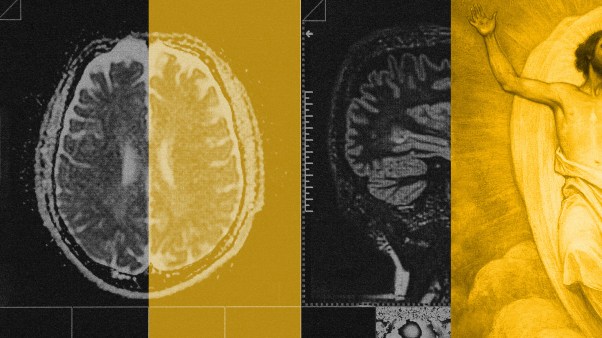Recently many joined Bethel worship leader Kalley Heiligenthal in fervent prayer for the raising of her daughter, some citing Jesus’ words Talitha koum.
I would never begrudge a grieving mother her commitment to every last hope for her child. I also respect faith that God can raise the dead. (As I wrote earlier this year for CT, I agree that credible resurrections have taken place.) But are such raisings normative? That is, should we always pray for the dead to be raised?
When Jesus sends out the Twelve, he commands them to heal the sick and raise the dead (Matt. 10:8; Luke 9:2). He extends the command to heal the sick to the 70 in Luke 10:9. In the book of Acts, God performs signs not only through the Twelve (e.g., Acts 9:41), but also through some other believers (6:8; 8:6; 9:17–18). These apparently include raising people from the dead (20:10).
But nowhere do we get the idea that God raises everyone who dies. Jesus does not try to raise his friend John the Baptist (Matt. 14:13). Believers buried and grieved for Stephen rather than raising him (Acts 8:2). A physician who shared with me his direct experience of a patient miraculously raised from the dead also recounted that God did not raise the physician’s own child when he died from leukemia.
The Bible needs to teach us about God’s power to do the extraordinary; it does not need to report as often the usual course of death, since most of us are already sadly familiar with that. This is not to condemn those who have prayed valiantly for raisings that didn’t happen; it is simply to observe that God has not guaranteed all raisings, especially when he has not initiated the prayer. (And sometimes the more personally invested we are in a particular prayer, the harder it is to discern God’s immediate direction.)
It’s important to understand Jesus’ expression Talitha koum—“Little girl, I say to you, get up!”—in the larger context of Mark. The story does provide a strong model of stubborn faith, but it is part of a larger narrative about conflict with evil and suffering in this world. Miracles are a foretaste of a perfect future, but they remain a foretaste. They offer present signs of the kingdom but not its completion.
Mark’s Talitha koum story follows two figures of faith who turned to Jesus. One is a respected local leader, a synagogue official, undoubtedly a person of means. The other is a bleeding woman whose medical condition has made her destitute. Mark describes her illness with language from Leviticus 15:25–27, which specifies that she would be ritually impure, temporarily contaminating anyone or anything she touched. Given customs of the day, she was almost certainly unmarried, reinforcing her destitution and social isolation.
Jairus, the synagogue official, humbles himself before Jesus, falling at his feet and expressing confidence that Jesus can heal his dying daughter by touching her (Mark 5:22–23). Their home is probably only a short walk away, but the matter is urgent because the daughter is close to death (5:23). The daughter is 12, on the cusp of adulthood; she has lived as many years as the bleeding woman has suffered (5:25, 42).
At this point, however, the bleeding woman’s crisis interrupts and thus delays Jesus in reaching Jairus’s daughter. Because this woman is ritually impure, custom discouraged her from pressing her way forward in the crowd (5:24, 27) and making contact with others. For the same reason, she doesn’t dare ask Jesus to touch her. In desperation, she trusts that God’s healing power in Jesus is sufficient if she can merely touch his cloak. When she does so, she is instantly healed (5:29).
While inconspicuous to others, her act is not hidden from Jesus. Although she is afraid to acknowledge what she has done, Jesus makes her testimony public (5:30–34). People might presume that she renders Jesus impure, but the one who will bear our sins on the cross is not ashamed to identify with our impurity. Instead, Jesus lets the entire town know that henceforth this woman is pure.
Today’s miracles look back to that miracle and anticipate the coming world in which we will have perfect healing and restoration.
This brings us back to Jairus’s faith. He did not need to witness this encounter to believe that Jesus was a healer; he had enough confidence in Jesus to seek his help to begin with. But his daughter’s case seems more urgent. Even those who respected Jesus as a healer now consider intervention too late. They announce that intervention is impossible since Jairus’s daughter has died (5:35).
So far as we can tell from Mark, Jesus has not yet raised anyone else from the dead. Jesus thus demands from Jairus greater faith, and he accordingly continues with Jesus to the house. Faith does not mean that Jairus will not join others’ astonishment when his daughter is raised (5:42).
Jesus had physical contact with ritual impurity when healing a leper (1:41) and the bleeding woman. But whereas such contacts rendered one impure until evening, touching a corpse rendered one impure for a week (Num. 19:11–13). Jesus, however, embraces us in our need, which takes priority over ritual purity (Mark 7:1–23) and even the Sabbath (2:23–3:6). He takes the dead girl by the hand and raises her up (5:41).
As Jesus takes her by the hand, he commands, “Talitha koum.” Mark writes his gospel for readers who understand Greek, but occasionally, as in this case, he preserves Jesus’ original words in Aramaic. Addressing her affectionately, Jesus commands the girl to arise. Mark often uses the Greek equivalent of this word, egeirô, when Jesus raises people up in healing, and the term also foreshadows Jesus’ own rising.
Although Jesus had made public the bleeding woman’s healing, he returns to his usual policy of secrecy now. Publicity about Jesus’ miracles makes privacy and special teaching more difficult. Couching his own identity in riddles and parables, Jesus delays revealing it until the right time—since his enemies will respond by killing him. Miracles raise his visibility and consequent opposition. So Jesus tells the professional mourners that the child is merely asleep (5:39) and warns the family not to tell anyone after he raises the girl (5:43).
The faith of the bleeding woman and Jairus fits a larger theme in Mark’s gospel. Seekers often show faith by desperately, stubbornly refusing to let anything keep them from Jesus, their only hope. They might persevere by tearing up a neighbor’s roof (presumably repairing it later, 2:4–5), enduring an insult (7:27–28), or ignoring a crowd’s discouragement (10:48, 52). Sometimes they might be able only to confess, “I believe—help my unbelief!” (9:24, ESV). Many of us can identify with this desperate faith, particularly in the face of tragedy.
But this theme of faith also highlights its more sinister contrast: People in this gospel, including Jesus’ own disciples, lack the faith to understand Jesus’ fuller mission (cf. 4:40; 9:19). Their faith finally falters in the face of the cross (14:50). Jesus’ contact with the impure and embrace of the marginalized bring him into conflict with the religious elite. Such conflict leads to the Cross and also judgment on his generation that would include the temple’s destruction (13:2). Mark spends as much time speaking of conflicts and ultimately Jesus’ passion as about healing. Indeed, Mark’s narrative about the disciples healing the sick and casting out demons (6:7–13, 30) frames a much larger section about the death of Jesus’ forerunner John (6:14–29).
Jesus’ kingdom ministry of healing makes him a growing target for his enemies. At the beginning of this gospel, Jesus preaches and teaches about God’s kingdom, a kingdom that will indeed come in all its fullness. But in Mark’s passion narrative, Jesus’ title of king is marked with a crown of thorns. Death still happens in this age, and unlike Jesus, no one else gets permanently resurrected until his return. An early second-century Christian declared that some of those Jesus raised had lived into his own lifetime. But no matter what their later faith, no first-century disciple is still with us now.
Nevertheless, the raising of Jairus’s daughter, like the miracle accounts that surround it, anticipate this gospel’s climactic miracle. In the final scene, an angel announces Jesus’ resurrection. Today’s miracles likewise look back to that miracle and anticipate the coming world in which we will have perfect healing and restoration. Miracles therefore offer hope for every grieving parent—hope not of a life temporarily extended, but of life that will never end.
Craig Keener is F. M. and Ada Thompson Professor of Biblical Studies at Asbury Theological Seminary. He is the author of Christobiography: Memories, History, and the Reliability of the Gospels, which recently won a CT Book Award.








